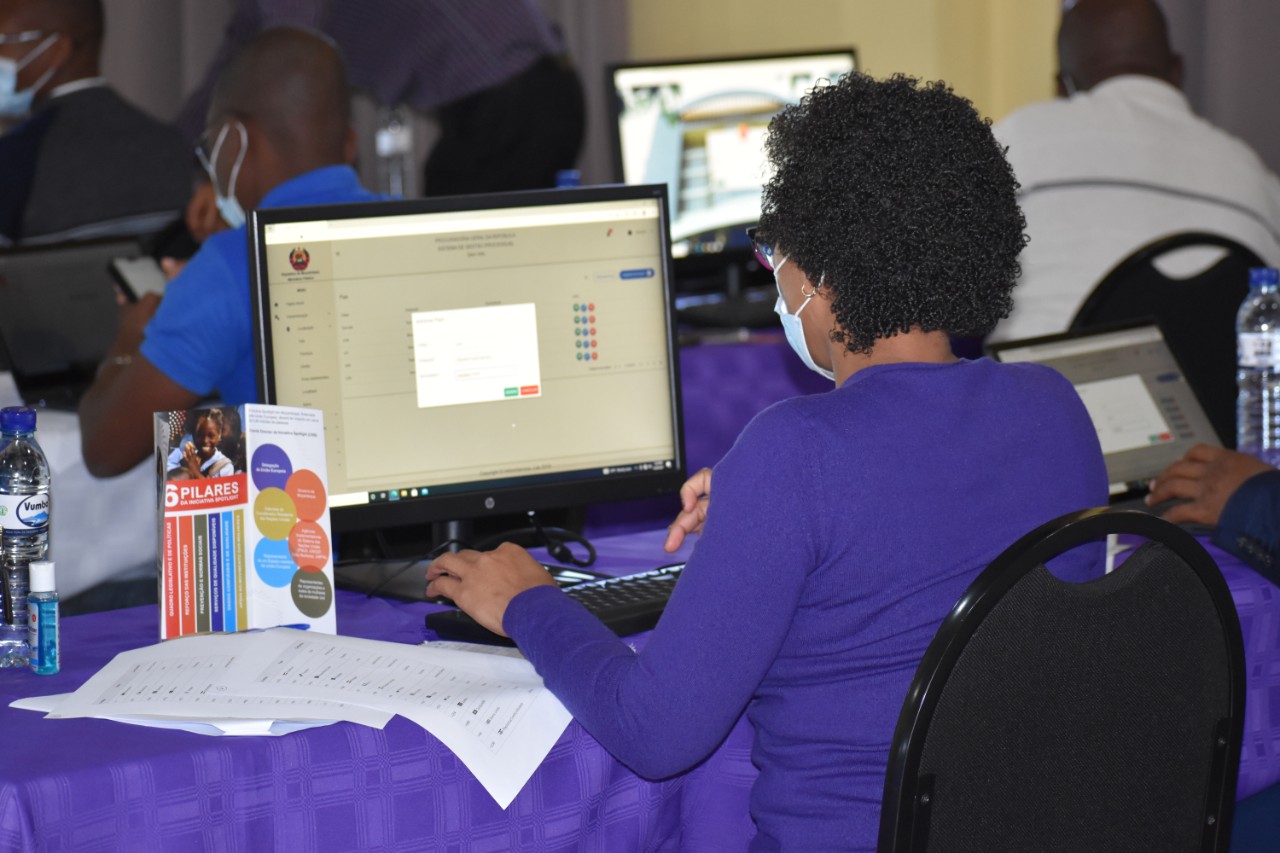UNDP Mozambique-Blog: PGR-SERNIC database allows criminal investigation using ICT's
May 8, 2022

Technician from the Attorney General's Office, from the central region of the country, making the parameterization of the legal types of crime and the registration of cases according to the jurisdiction, as well as testing the credentials to access the platform
The Attorney General's Office (PGR) and the National Criminal Investigation Service (SERNIC) have developed, within the framework of the Spotlight Initiative, a Procedural Management System that allows criminal.
Named GEPROC, the platform aims to reduce the data discrepancy between these two institutions and produce timely improved statistics on various types of crime, including those linked to GBV, and all forms of violence against women and girls, allowing to reduce the impunity of criminals, strengthen the system of evidence or proof and increase the capacity of the Justice Administration System (SAJ, in Portuguese) as a whole.
Training for technicians from both institutions
To ensure the proper use of the system, a total of 76 professionals from both institutions were trained divided into two groups. The first consists of 39 agents and technicians from the southern provinces and the second by 37 agents and technicians from the provinces of the Center and North of the country. The training of the technicians and agents of the first group takes place from 21 to 25 June and that of the second from 28 to 2 July.
At the Attorney General Office level, we believe that the system will be able to provide support in terms of receiving and analyzing information or data on different types of crimes, with emphasis on crimes related to GBV, harmful practices against women and girls, among others. We will be faster in sharing information and the communicability component will improve a lotFernando Colasso, Head of the Statistics Department of the Attorney General Office

Trainees display certificates of completion after 5 days of intensive training that, among other things, allowed them to develop skills and competences in the use and management of the Procedural Management System.
Emergency context
In carrying out the activities of control and management of criminal proceedings between PRG and SERNIC, the identification and qualification of information are extremely relevant and decisive in the effectiveness of planning and strategy, driving an objective decision-making. Considering the complexity of this activity and the increasing flow of process information, the implementation of a controlled information sharing system is a fundamental boost in the objectifying of planned strategic results.
It is in this context that there is a need to automate the management of the process information shared between the PGR and SERNIC, ensuring, among other things, the reduction of the statistical discrepancy of procedural information, the prevention of redundancy d and information during the life cycle of proceedings between the institutions and the implementation of the inform procedural action.
Technician from the Attorney General's Office, from the central region of the country, making the parameterization of the legal types of crime and the registration of cases according to the jurisdiction, as well as testing the credentials to access the platform
Project phases and results
The project is divided into four phases of implementation, namely: (i) development of the PGR's procedural management system; (ii) development of SERNIC'S procedural management system; (iii) development of the information reconciliation system; (iv) integration of information systems and training of technicians. With regard to the results, the system expects (i) to automatize and uniformize the information station of periodic and monthly analytical reports between the institutions, (ii) ensure that information is accessible in a timely manner, following the safety criteria pre-established by the institutions for the protection of information, and (iii) gradually decrease the redundancy of information as a result of duplication and errors. With the in chronics of the two systems it is expected that the level of differences in statistical results between the two institutions will decrease exponentially.
A product needs to be innovative enough to differentiate itself from the rest, but not so innovative that the user doesn't understand.Reid Hoddman

 Locations
Locations


